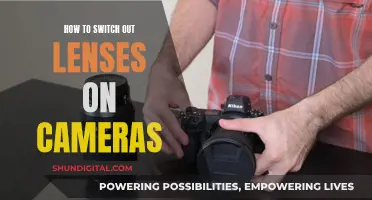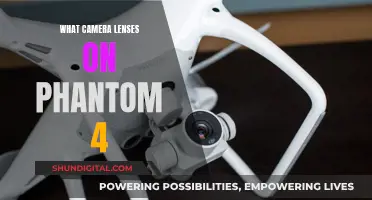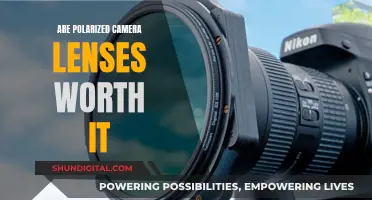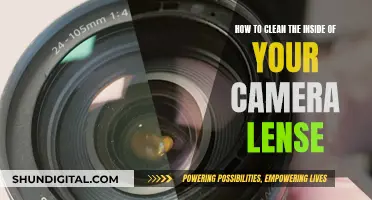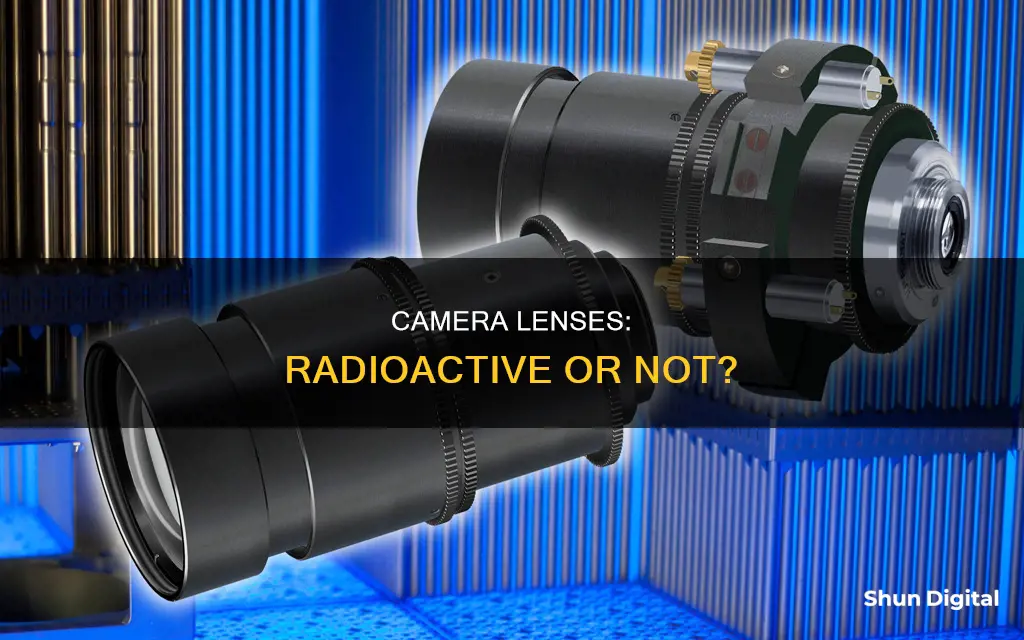
Many camera lenses produced from the 1940s to the 1980s are measurably radioactive. The main source of radioactivity is the use of thorium oxide, which has a crystalline structure similar to calcium fluoride (fluorite). The addition of thorium oxide to the glass increases the refractive index while maintaining low dispersion, which is especially beneficial for making optical glass.
Thorium is a weakly radioactive metallic chemical element with the symbol Th and atomic number 90. All known thorium isotopes are unstable. The most stable isotope, 232Th, has a half-life of 14.05 billion years, or about the age of the universe. It decays very slowly via alpha decay, starting a decay chain named the thorium series that ends at stable 208Pb.
The use of thorium in camera lenses fell out of use by the early 1980s due to factory workers' health concerns and consumer radiophobia following nuclear accidents.
| Characteristics | Values |
|---|---|
| Reason for radioactivity | Use of thorium oxide in the glass used in the lens elements |
| Period of production | 1940s to 1980s |
| Producers | Eastman Kodak, Canon, Konica, Asahi Pentax, and others |
| Radioactivity levels | 10 mR/hr as measured at the lens element's surface |
| Radiation type | Alpha, beta, and gamma |
| Health concerns | Exposure to alpha particles inside the body can be harmful |
| Exposure to beta and gamma radiation from broken lenses can be harmful | |
| Exposure to radiation from intact lenses is negligible |
What You'll Learn

Lenses with thorium oxide are measurably radioactive
Thorium oxide has a crystalline structure similar to calcium fluoride (fluorite). Its optical properties of high refractivity and low dispersion allow lens designers to minimize chromatic aberration and use lenses of lower curvature, which are less expensive to produce. The presence of thorium in the lens can cause moderate to severe browning of the lens elements, which can be reversed by exposure to bright light and UV light.
Typical radiation levels of these lenses can approach 10 mR/hr as measured at the lens element's surface. The radiation level decreases substantially with distance; at a distance of 3 feet, it is difficult to detect over typical background levels.
The most prolific producer of radioactive lenses was Eastman Kodak. From the 1940s through the 1960s, they produced and sold substantial numbers of amateur cameras with "thoriated" lenses, including some of the Pony, Signet, and high-end Instamatic cameras. In addition, many professional-level Ektar lenses from this era also contain thorium.
It is important to note that lenses with thorium oxide pose a negligible risk to human health when used normally. However, it is recommended to avoid breaking the lenses to prevent the release of radioactive dust and fine particles, which can be harmful if ingested or inhaled.
Lens Compatibility: Understanding Camera Lens Interchangeability
You may want to see also

Thorium oxide was used to achieve a high refractive index
> n1 sin θ1 = n2 sin θ2
Where θ1 and θ2 are the angle of incidence and angle of refraction, respectively, of a ray crossing the interface between two media with refractive indices n1 and n2.
The higher the refractive index of a lens, the greater the bending of light, and the less curvature the lens needs. This means that lenses with a high refractive index can be thinner and lighter.
Thorium oxide has a crystalline structure similar to calcium fluoride (also known as fluorite). Like fluorite, it has a high refractive index and low dispersion. Dispersion is the ability of a material to split white light into its constituent colours when refracted. Dispersion causes chromatic aberration in lenses, which is when a lens fails to focus different colours to the same point.
Lenses with a high refractive index and low dispersion can minimise chromatic aberration and use lenses of lower curvature, which are less expensive to produce.
The addition of thorium oxide to glass increases its refractive index while maintaining low dispersion. This is especially beneficial for making optical glass.
A patent for optical glass containing thorium was issued in 1949 to Paul De Paolis at Kodak. Later formulations of this glass included up to 28% thorium oxide, and even 30% by weight.
However, thorium is radioactive, and thorium-containing lenses were eventually replaced by glass including lanthanum oxide, which is only 1/10,000th as radioactive as thorium.
How to Eclipse-Proof Your Camera Lens
You may want to see also

Lenses with thorium oxide are safe under normal use
Many camera lenses produced from the 1940s to the 1980s are measurably radioactive. The main source of radioactivity is the use of thorium oxide as a component of the glass used in the lens elements.
Despite this, lenses with thorium oxide are safe under normal use. The radioactivity levels of these lenses are difficult to detect over typical background levels when at a distance of 3 feet (0.9m). For reference, a typical chest x-ray exposes a patient to about 10 mR of radiation, while a full set of dental x-rays exposes the patient to 10 mR to 40 mR.
A study by the Physics department of Sweden's Royal Institute of Technology found that the total exposure to a professional photographer using a typical thoriated lens would amount to only 0.2% of the yearly allowable exposure to the eye and 0.17% to the whole body.
However, it is important to note that thoriated glass eyepieces are significantly more dangerous and can cause cataracts and other problems.
Camera Lenses: Are Their Filters Universal?
You may want to see also

Radioactive lenses can be identified by a Geiger counter or yellowing of the lens elements
Many camera lenses produced from the 1940s to the 1980s are measurably radioactive. The main source of radioactivity is the use of thorium oxide (up to 30% by weight) as a component of the glass used in the lens elements. The presence of thorium can cause the lens elements to turn a moderate to severe brown, and, in some cases, a yellow hue. This yellowing can be reversed by exposure to bright light or UV light.
The most reliable way to determine whether a lens is radioactive is by using a Geiger counter. However, if you do not have access to one, a visual inspection can be used as a backup. A visual inspection can reveal hints that the lens is radioactive – radiation over time can cause yellowing of the lens elements.
The yellowing of the lens elements can be identified by looking through the lens at a white sheet of paper. A significant difference in tone indicates a higher chance that the lens is radioactive. However, it is important to note that clear glass does not necessarily mean that the lens does not contain radioactive materials. Radioactive lenses can lose their yellow tint when exposed to UV light.
It is important to note that the yellowing of the lens elements is not always due to radioactivity. Ageing and the composition of the glass can also cause discolouration.
How Lenses Transform Your Camera's Vision
You may want to see also

Radioactive lenses are not being made anymore
Thorium oxide was added to the glass used in the lens elements to increase the refractive index while maintaining low dispersion. This allowed lens designers to minimize chromatic aberration and utilize lenses of lower curvature, which were less expensive to produce.
While lenses containing thorium oxide were produced from the 1940s to the 1980s, the practice has since been discontinued due to health and safety concerns. By the early 1980s, newer formulations emerged that offered similar optical properties without the added risk of radioactivity.
Today, consumer lenses do not contain thorium, and it has been replaced with newer glass formulations. The main concern was the health of factory workers who polished and ground the glass, as well as consumer fears about radiation.
While some vintage lenses may still contain thorium and emit low levels of radiation, the health risks associated with their use are considered minimal. However, it is important to handle these lenses with care and avoid breaking them to prevent the release of radioactive particles.
What Shape Makes Camera Lenses Work?
You may want to see also
Frequently asked questions
Many lenses produced from the 1940s through the 1980s are measurably radioactive. The main source of radioactivity is the use of thorium oxide as a component of the glass used in the lens elements.
A radioactive lens that contains thorium will give off approximately 0.01 millirem (mrem) per hour. By comparison, a chest X-Ray gives you 1,000x that dose in a single shot (about 10 mrem).
The consensus is that these lenses are safe to use, but it is recommended to avoid breaking the lenses and to avoid using them as magnifying glasses.
The most reliable way to determine whether a lens is radioactive is by measuring it with a Geiger counter. However, a visual inspection can also be used as a backup. Radiation over time causes yellowing of the lens elements, but ageing and the composition of the glass can also cause discolouration.
Current consumer lenses do not contain thorium – it has been replaced with newer formulations of glass, avoiding the radioactivity problem.



